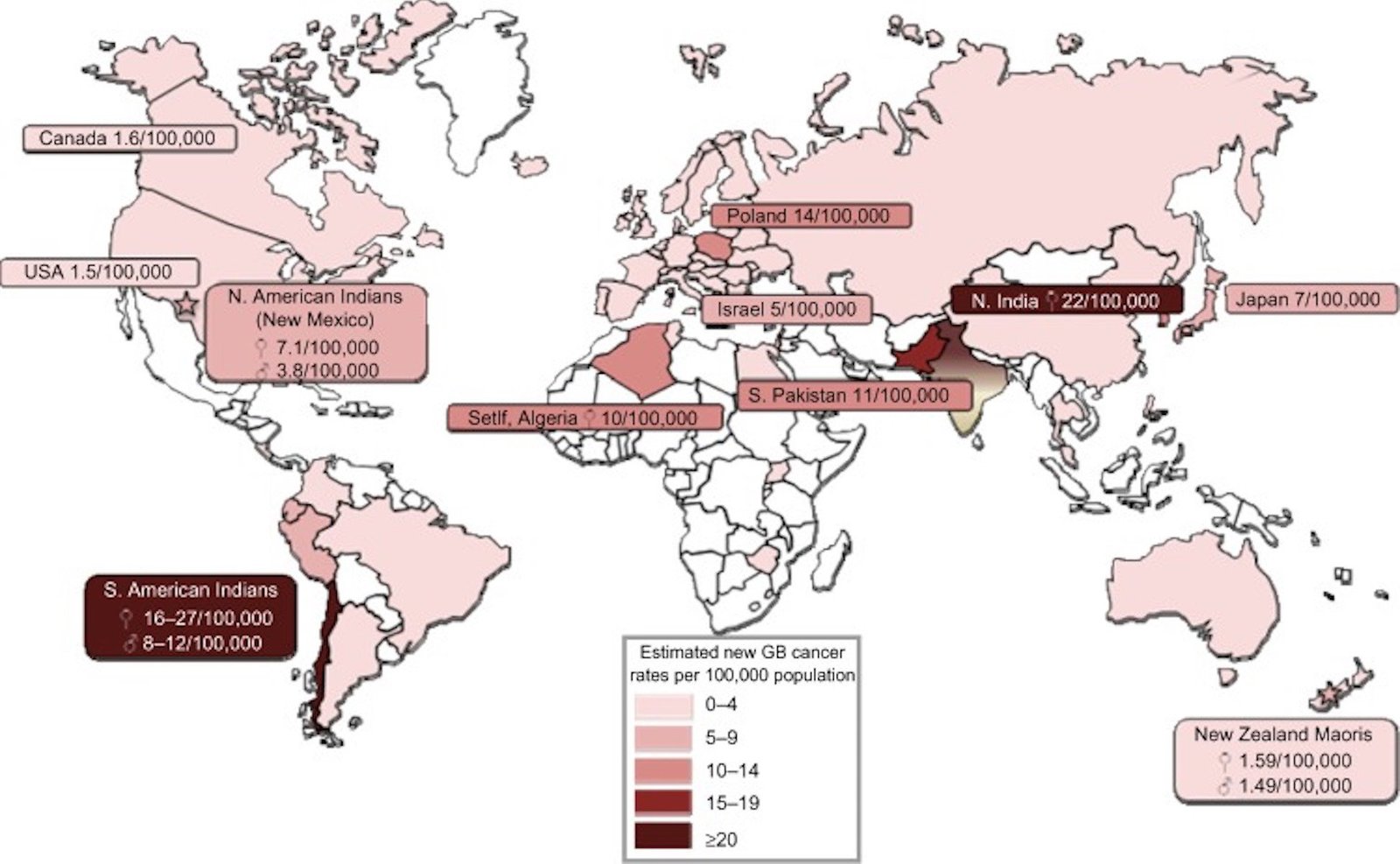
Gallbladder Cancer (GBC) is relatively rare compared to more common cancers of the lungs, breast, prostate and colon. However, it has emerged as a silent killer among North Indian women — the disease is usually detected only in the advanced stages when the mean survival rate for patients is around 6 months. Only 5% of the patients make it past the 5‑year survival criteria. Over 20 women out of a population of 100,000 in North and Central India suffer from GBC unlike their South Indian counterparts who have a 10% lesser incidence of the disease.
Adding crucial information to what we already know about GBC, is a research study led by Amit Dutt at the Advanced Centre for Treatment, Research and Education in Cancer (ACTREC), Tata Memorial Centre, Mumbai, which links GBC to non-typhoidal Salmonella species along with typhoidal strains.
In this study, published in the journal Infectious Agents and Cancer, Amit Dutt and his colleagues evaluated 26 primary GBC samples and paired normal samples for presence of 6 common Salmonella serotypes and for 143 Human Papilloma Virus (HPV) types. DNA extracted from these samples were run through standard nested PCR method used for Salmonella detection as well as through whole exome sequencing studies. PCR-based analysis did not show presence of Salmonella unlike the highly sensitive high throughput DNA sequencing. In whole exome sequencing studies, exome sequences of tumour samples and paired normal samples were aligned with reference sequences of the 6 Salmonella serotypes chosen (S. typhi Ty2, S. typhi CT18, S. typhimurium LT2, S. choleraesuis SCB67, S. paratyphi TCC, and S. paratyphi SPB7) and the HPV reference sequence.
The sequencing data showed that 11 of the 26 samples tested showed presence of typhoidal Salmonella species. Interestingly, 12 of those 26 samples showed presence of non-typhoidal Salmonella isolates. 6 of these samples were co-infected with both. Previous studies in mice have shown that Salmonella DNA play a role in carcinogenesis. Although typhoidal Salmonella infection doesn’t predestine a patient towards tumour development, a chronic infection may result in the patient being a chronic typhoid fever carrier. Dutt’s team is of the opinion that the bacteria possibly provide the ‘inflammatory stimulus’ required for carcinogenesis. This study hints at a role for Salmonella in GBC similar to that of Helicobacter pylori in gastric cancer and Fusobacterium in colon cancer.
By including tests for non typhoidal Salmonella in the diagnosis of typhoid, we can prevent them from remaining undetected and possibly leading to chronic carrier state. This becomes all the more important especially since other studies have shown that non-typhoidal Salmonella show a greater resistance towards standard antibiotics used.
At present the future of a patient diagnosed with GBC looks bleak. In a country where typhoid is so common, appropriate augmentation in the diagnosis methods can change the scenario. Chronic typhoid leading to malignancy can be countered early on. Coupled with proper follow up and treatment, this can help reduce the incidence of gallbladder cancer.